Effect of Decreasing the Interception of Solar Illuminance by Vegetation on Ground Temperature in Degraded Grasslands
Abstract
:1. Introduction
2. Materials and Methods
2.1. Study Site
2.2. Experimental Design
2.3. Measurement and Sampling
2.4. Data Analysis
3. Results
3.1. Interception of Solar Illuminance by Vegetation in Three Types of Grasslands
3.1.1. Vertical Decomposition of Interception of Solar Illuminance by Vegetation
3.1.2. Function Distribution of Interception of Solar Illuminance by Vegetation in Grassland
3.2. Effect of Interception of Solar Illuminance by Vegetation on Soil Temperature in Three Types of Grasslands
3.3. Increasing Ground Temperatures in Degraded Grasslands
4. Discussion
5. Conclusions
Author Contributions
Funding
Institutional Review Board Statement
Informed Consent Statement
Data Availability Statement
Conflicts of Interest
References
- Zhou, D.W.; Ripley, E.A. Environmental changes following burning in a Songnen grassland, China. J. Arid. Environ. 1997, 36, 53–65. [Google Scholar]
- Linderholm, H.W. Growing season changes in the last century. Agric. For. Meteorol. 2006, 137, 1–14. [Google Scholar] [CrossRef]
- Hao, L.; Wang, S.; Cui, X.; Zhai, Y. Spatiotemporal Dynamics of Vegetation Net Primary Productivity and Its Response to Climate Change in Inner Mongolia from 2002 to 2019. Sustainability 2021, 13, 13310. [Google Scholar] [CrossRef]
- Yu, G.; Piao, S.; Zhang, Y.; Liu, L.; Peng, J.; Niu, S. Moving toward a new era of ecosystem science. Geogr. Sustain. 2021, 2, 151–162. [Google Scholar] [CrossRef]
- Basto, S.; Thompson, K.; Phoenix, G.; Sloan, V.; Leake, J.; Rees, M. Long-term nitrogen deposition depletes grassland seed banks. Nat. Commun. 2015, 6, 1–6. [Google Scholar] [CrossRef] [PubMed] [Green Version]
- Fay, P.; Prober, S.; Harpole, W.; Knops, J.M.; Jin, V.L.; Klein, J.; Moore, J.L.; Bakker, J.D.; Borer, E.T.; Yang, L.H.; et al. Grassland productivity limited by multiple nutrients. Nat. Plants 2015, 1, 15080. [Google Scholar] [CrossRef]
- Shawerika, M.R.; Zavaletanona, S.; Chiarielloelsa, R. Grassland Responses to Global Environmental Changes Suppressed by Elevated CO2. Science 2002, 45, 1987–1990. [Google Scholar]
- Monteith, L.K. Trapping and Thermal Release of Irradiation Electrons from Polyethylene Terephthalate Films. J. Appl. Phys. 1966, 37, 2633–2639. [Google Scholar] [CrossRef]
- Wu, D.H.; Zhao, X.; Liang, S.L.; Zhou, T.; Huang, K.C.; Tang, B.J.; Zhao, W.Q. Time-lag effects of global vegetation responses to climate change. Glob. Chang. Biol. 2015, 21, 3520–3531. [Google Scholar] [CrossRef]
- Knapp, A.K.; Fay, P.A.; Blair, J.M.; Collins, S.L.; Smith, M.D.; Carlisle, J.D.; Harper, C.W.; Danner, B.T.; Lett, M.S.; McCarron, J.K. Rainfall Variability, Carbon Cycling, and Plant Species Diversity in a Mesic Grassland. Science 2002, 298, 2202–2205. [Google Scholar] [CrossRef] [Green Version]
- Du, H.S.; Wu, Z.Y. Quantitative Evaluation of Agro-Meteorological Disasters in China. Bangladesh J. Bot. 2017, 46, 1105–1115. [Google Scholar]
- Old, S.M. Microclimate, Fire, and Plant Production in an Illinois Prairie. Ecol. Monogr. 1969, 39, 355–384. [Google Scholar] [CrossRef]
- Facelli, J.; Pickett, S.T.A. Indirect Effects of Litter on Woody Seedlings Subject to Herb Competition. Oikos 1991, 62, 129–138. [Google Scholar] [CrossRef]
- Facelli, J.; Pickett, S.T.A. Plant litter: Its dynamics and effects on plant community structure. Bot. Rev. 1991, 57, 1–32. [Google Scholar] [CrossRef]
- Wang, L.; Liu, H.; Ketzer, B.; Horn, R.; Bernhofer, C. Effect of grazing intensity on evapotranspiration in the semiarid grasslands of Inner Mongolia, China. J. Arid Environ. 2012, 83, 15–24. [Google Scholar] [CrossRef]
- Wang, Q.; Riemann, D.; Vogt, S.; Glaser, R. Impacts of land cover changes on climate trends in Jiangxi province China. Int. J. Biometeorol. 2014, 58, 645–660. [Google Scholar] [CrossRef]
- Zhan, Q.; Zhao, W.; Yang, M.; Xiong, D. A long-term record (1995–2019) of the dynamics of land desertification in the middle reaches of Yarlung Zangbo River basin derived from Landsat data. Geogr. Sustain. 2021, 2, 12–21. [Google Scholar] [CrossRef]
- Ketzer, B.; Liu, H.; Bernhofer, C. Surface characteristics of grasslands in Inner Mongolia as detected by micrometeorological measurements. Int. J. Biometeorol. 2008, 52, 563–574. [Google Scholar] [CrossRef]
- Zhang, G.; Tao, J.; Dong, J.W.; Xu, X. Spatiotemporal variations in thermal growing seasons due to climate change in Eastern Inner Mongolia during the period 1960–2010. Resour. Sci. 2011, 33, 2323–2332. [Google Scholar]
- Shen, X.; Liu, B.; Zhou, D. Using GIMMS NDVI time series to estimate the impacts of grassland vegetation cover on surface air temperatures in the temperate grassland region of China. Remote Sens. Lett. 2016, 7, 229–238. [Google Scholar] [CrossRef]
- Shen, X.; Liu, B.; Jiang, M.; Lu, X. Marshland Loss Warms Local Land Surface Temperature in China. Geophys. Res. Lett. 2020, 47, e2020GL087648. [Google Scholar] [CrossRef] [Green Version]
- Teuling, A.; Seneviratne, S.; Stöckli, R.; Reichstein, M.; Moors, E.; Ciais, P.; Luyssaert, S.; Hurk, B.V.D.; Ammann, C.; Bernhofer, C.; et al. Contrasting response of European forest and grassland energy exchange to heatwaves. Nat. Geosci. 2010, 3, 722–727. [Google Scholar] [CrossRef]
- Piao, S.; Mohammat, A.; Fang, J.; Cai, Q.; Feng, J. NDVI-based increase in growth of temperate grasslands and its responses to climate changes in China. Glob. Environ. Chang. 2006, 16, 340–348. [Google Scholar] [CrossRef]
- Fang, J.; Piao, S.; He, J.; Ma, W. Increasing terrestrial vegetation activity in China, 1982–1999. Sci. China Ser. C Life Sci. 2004, 47, 229–240. [Google Scholar] [CrossRef]
- Mariotto, I.; Gutschick, V.P. Non-Lambertian Corrected Albedo and Vegetation Index for Estimating Land Evapotranspiration in a Heterogeneous Semi-Arid Landscape. Remote Sens. 2010, 2, 926–938. [Google Scholar] [CrossRef]
- Zhang, H.; Liu, B.; Zhou, D.; Wu, Z.; Wang, T. Asymmetric Soil Warming under Global Climate Change. Int. J. Environ. Res. Public Health 2019, 16, 1504. [Google Scholar] [CrossRef] [Green Version]
- Song, Y.; Zhou, D.; Zhang, H.; Li, G.; Jin, Y.; Li, Q. Effects of vegetation height and density on soil temperature variations. Chin. Sci. Bull. 2013, 58, 907–912. [Google Scholar] [CrossRef] [Green Version]
- Karl, T.R.; Kukla, G.; Razuvayev, V.N.; Changery, M.J.; Quayle, R.G.; Heim, R.R.; Easterling, D.R.; Bin Fu, C. Global warming: Evidence for asymmetric diurnal temperature change. Geophys. Res. Lett. 1991, 18, 2253–2256. [Google Scholar] [CrossRef]
- Zhang, H.; Wang, E.; Zhou, D.; Luo, Z.; Zhang, Z. Rising soil temperature in China and its potential ecological impact. Sci. Rep. 2016, 6, 35530. [Google Scholar] [CrossRef]
- Du, B.; Zheng, Y.; Liu, J.; Mao, D. Threatened plants in China’s sanjiang plain: Hotspot distributions and gap analysis. Sustainability 2018, 10, 194. [Google Scholar] [CrossRef] [Green Version]
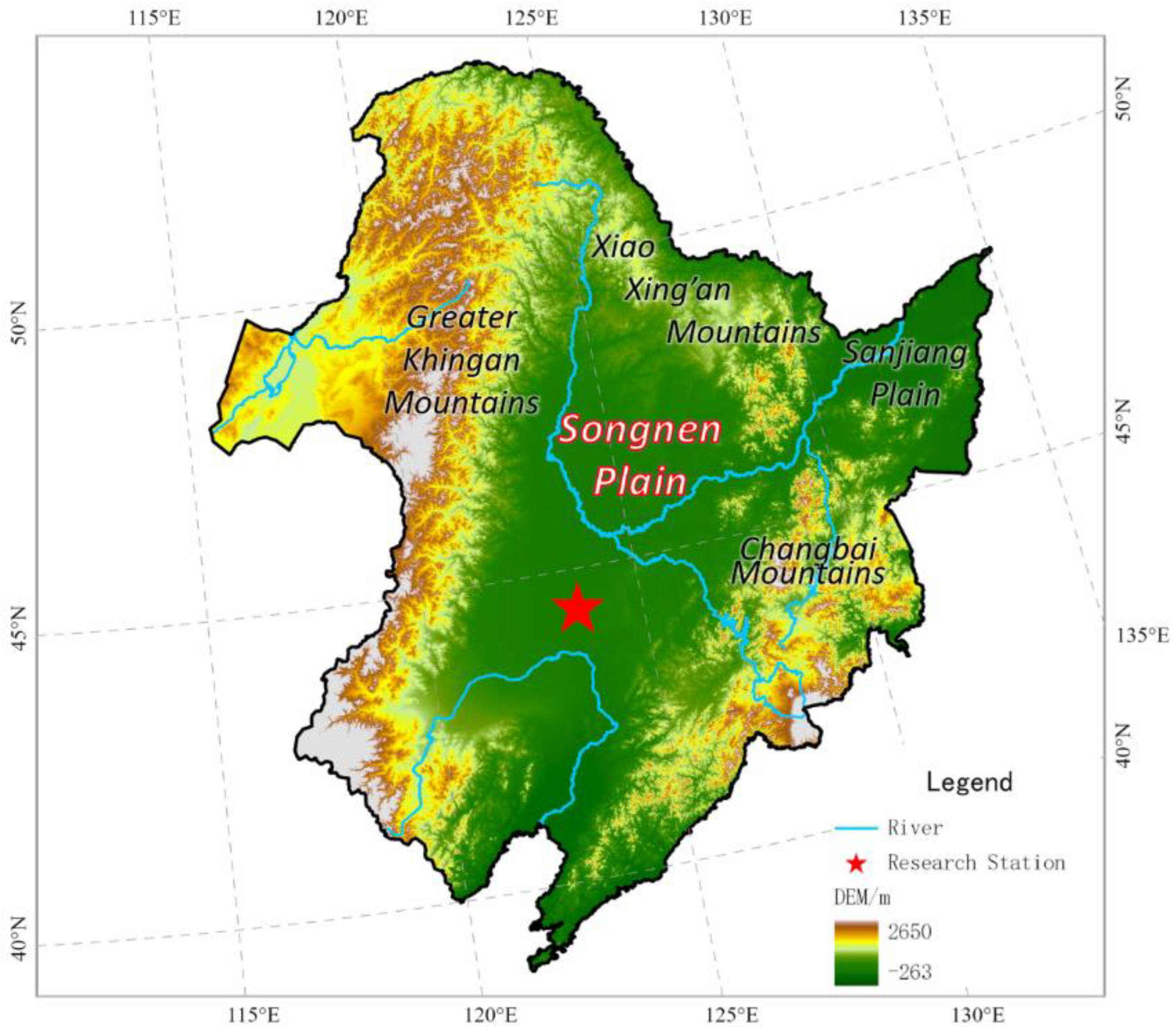
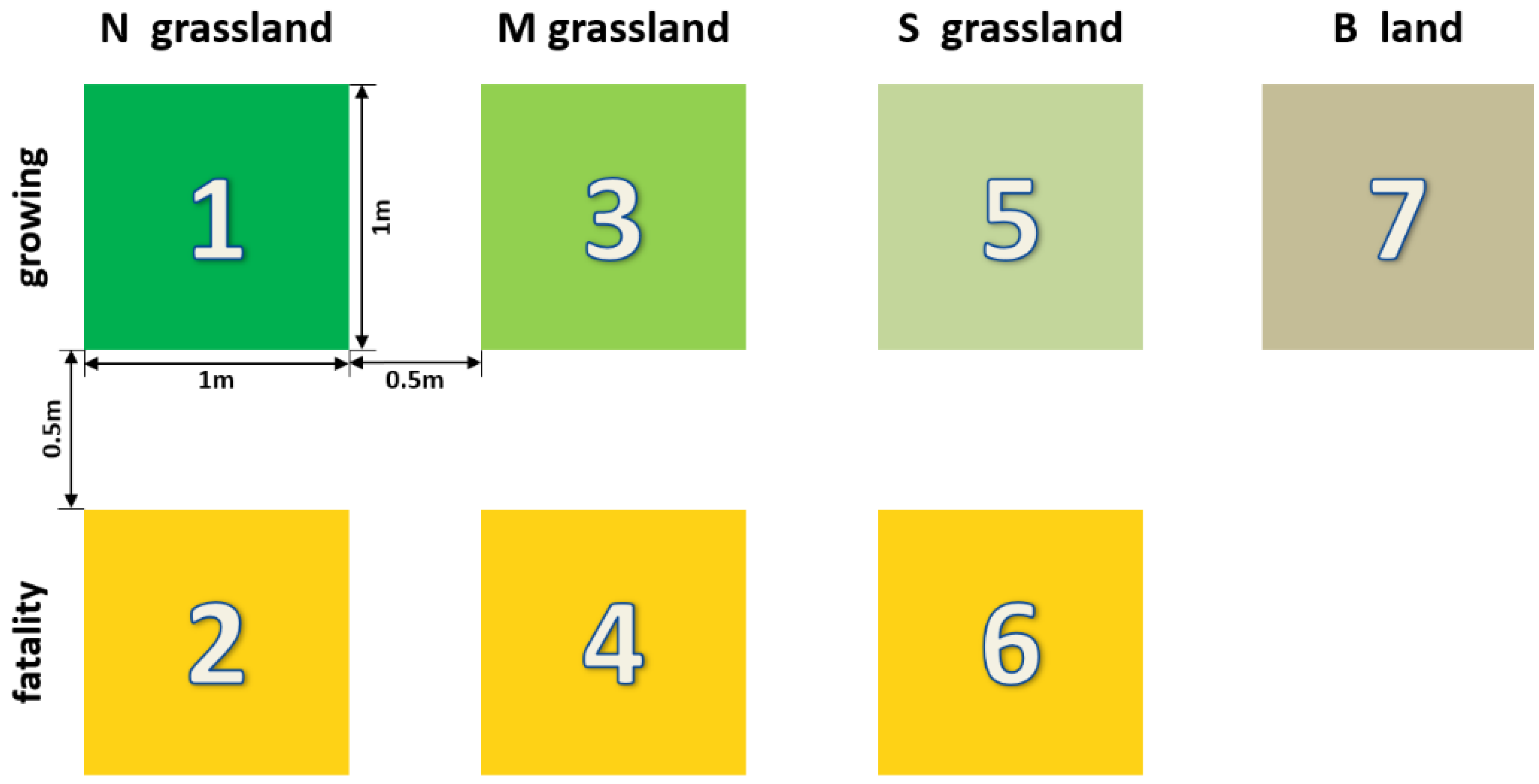
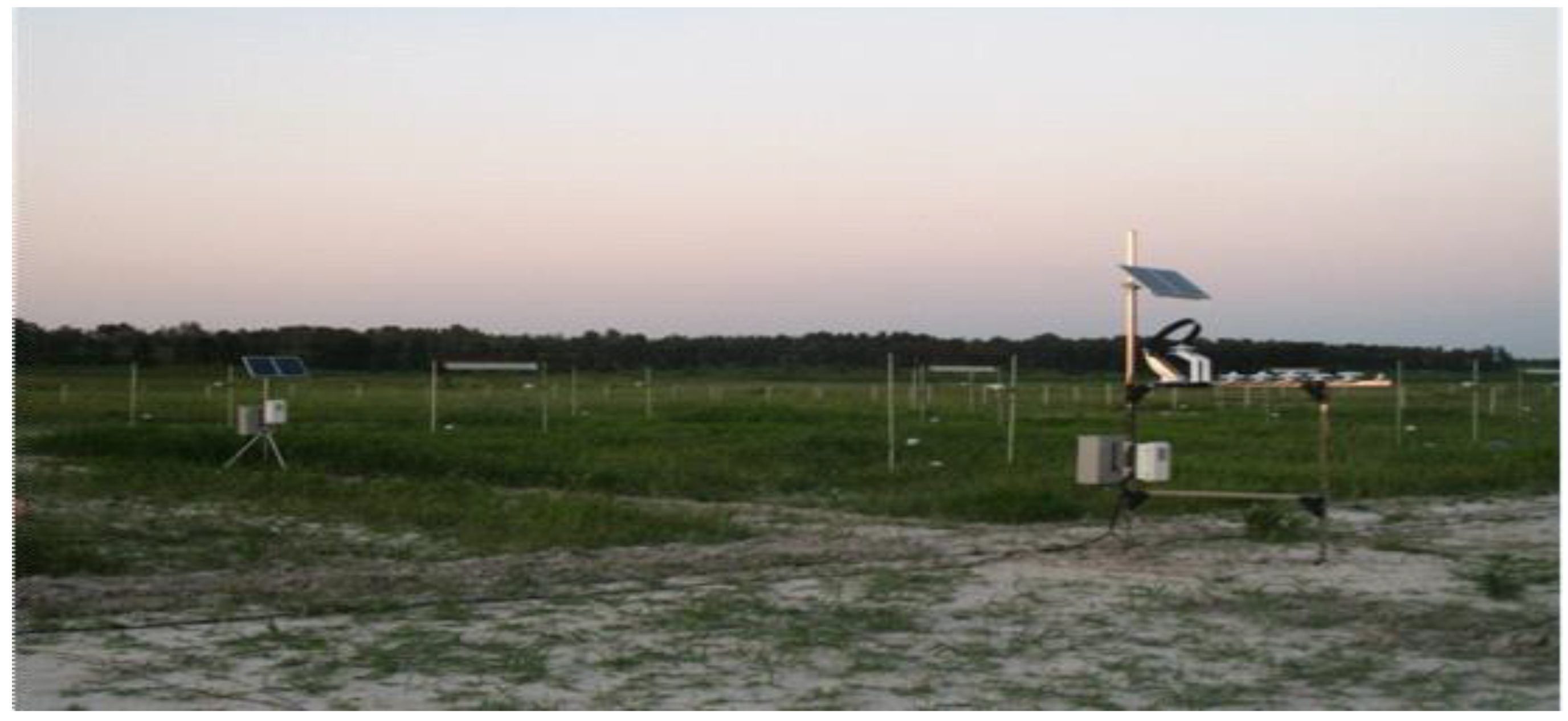


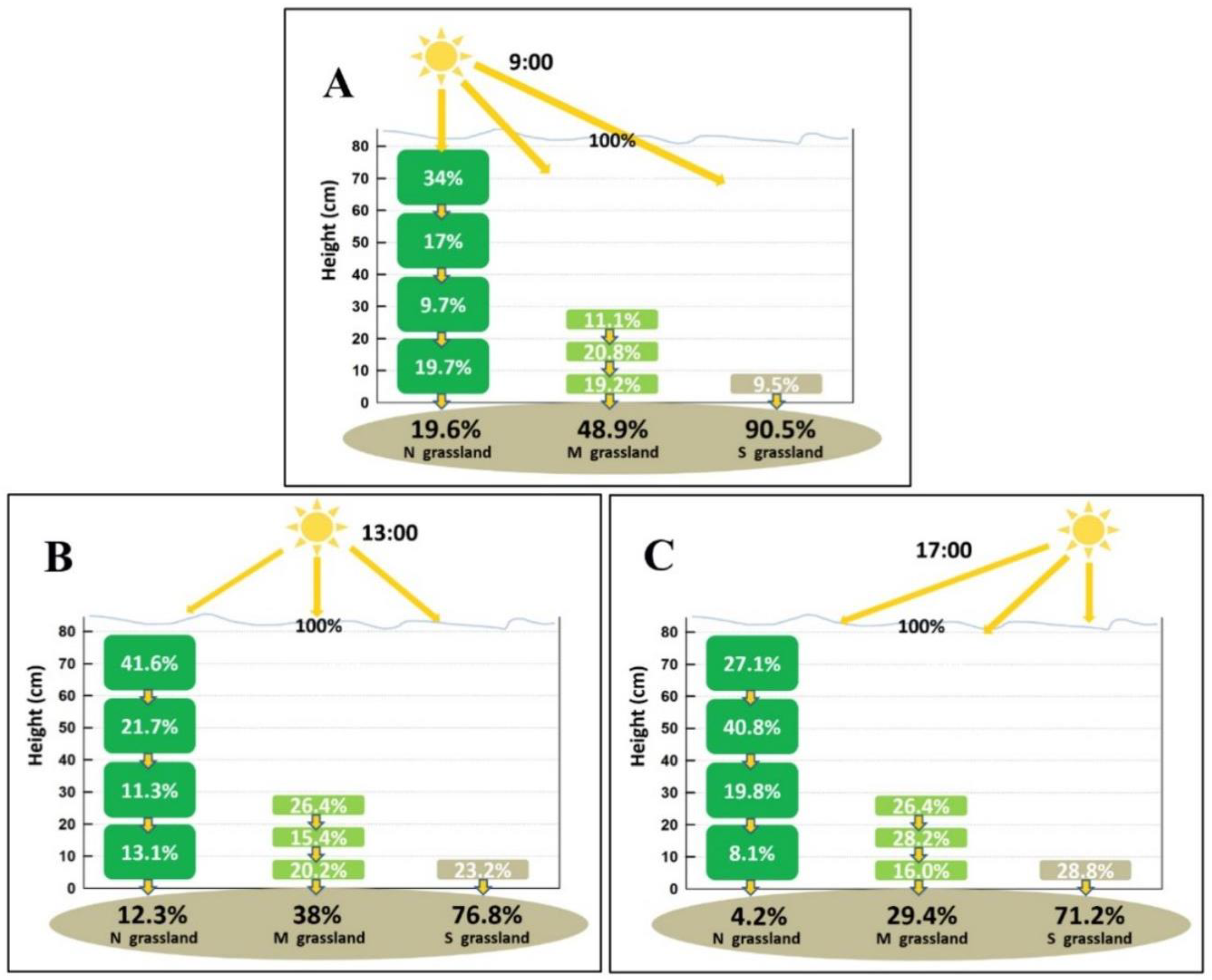
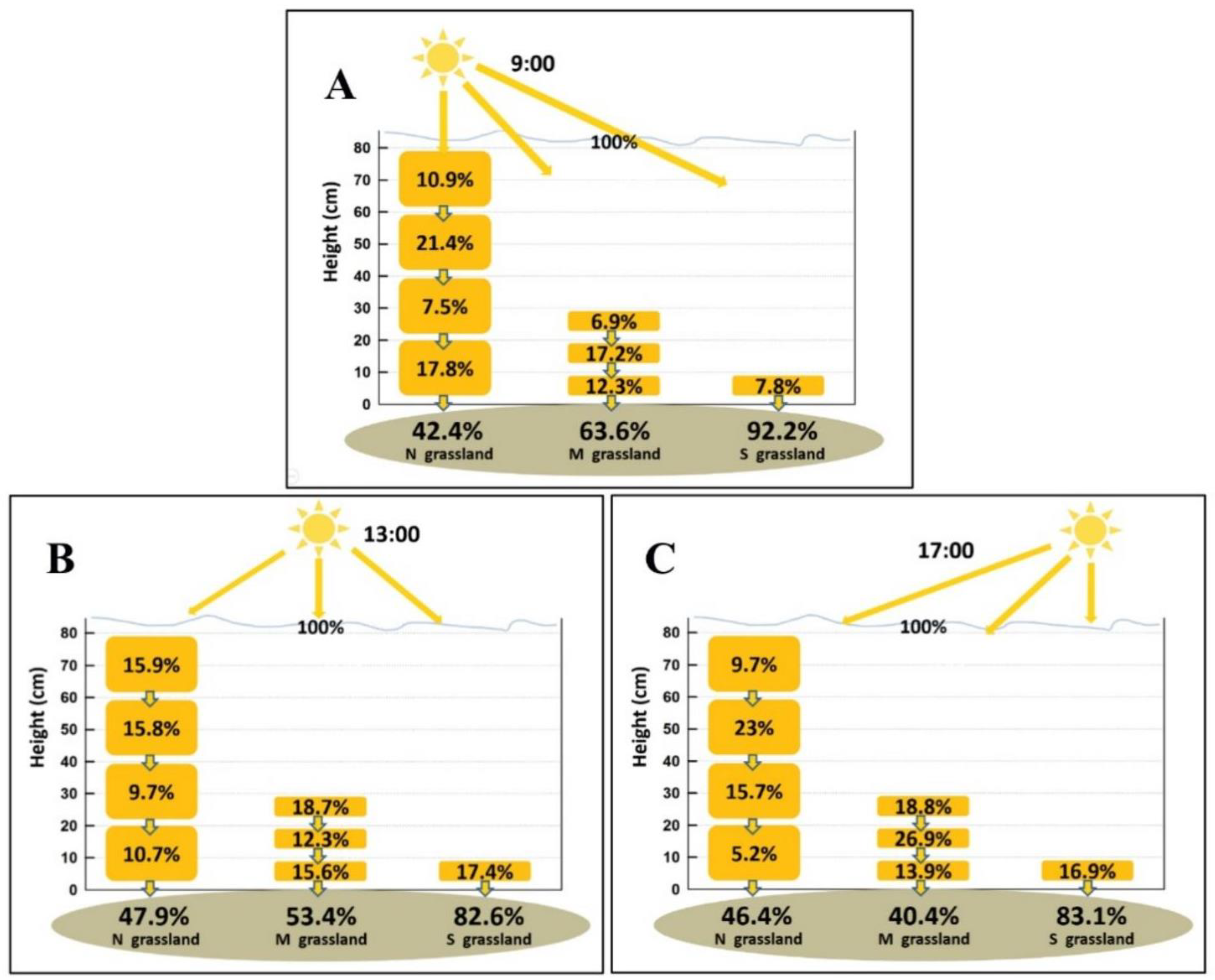
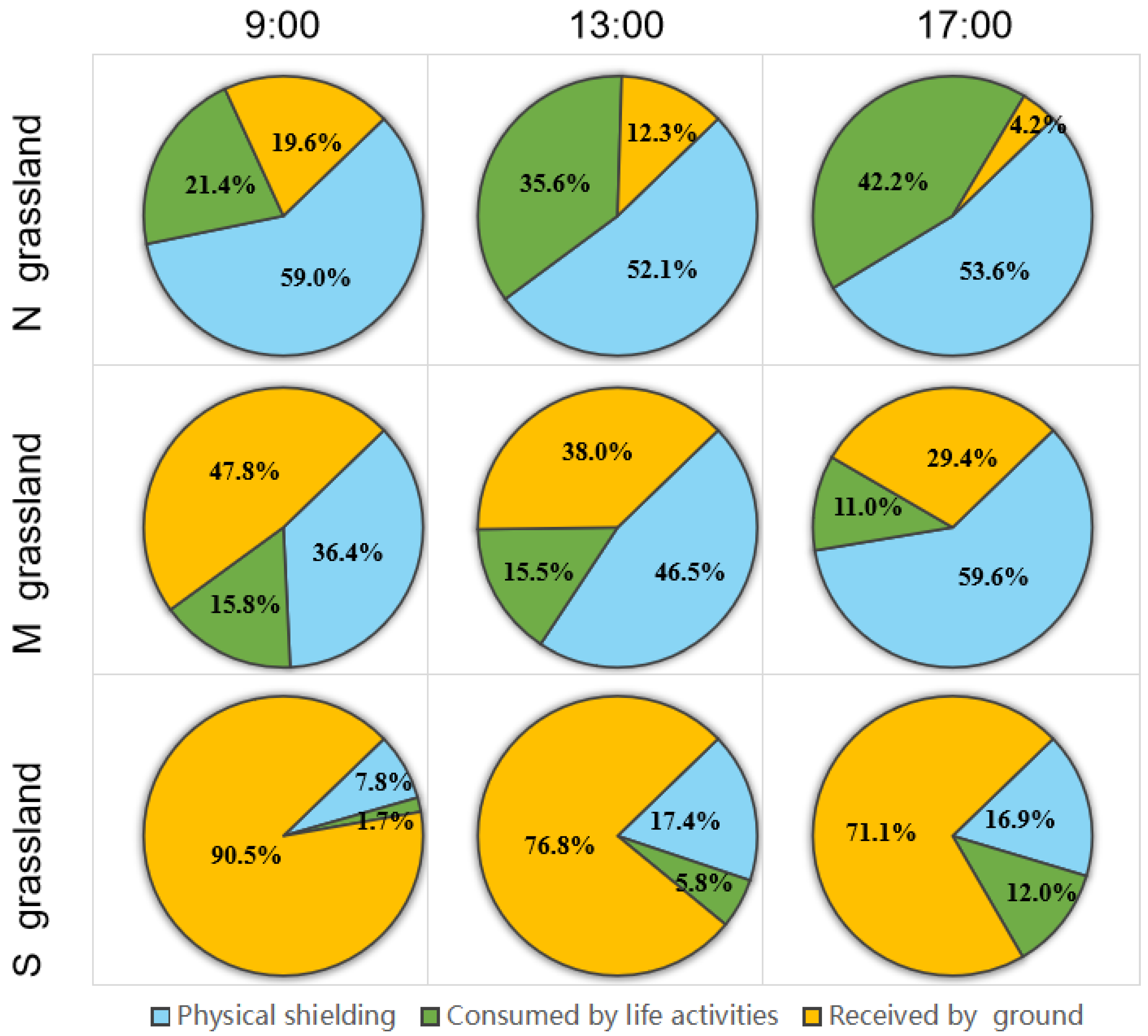


| Indicators | Layer | No. 1 Subarea | No. 2 Subarea | No. 3 Subarea | No. 4 Subarea | No. 5 Subarea | No. 6 Subarea | No. 7 Subarea |
|---|---|---|---|---|---|---|---|---|
| Illuminance (LUX) | 0 cm | |||||||
| 10 cm | NA | NA | NA | |||||
| 20 cm | NA | NA | NA | |||||
| 30 cm | NA | NA | NA | NA | NA | |||
| 40 cm | NA | NA | NA | NA | NA | |||
| 60 cm | NA | NA | NA | NA | NA | |||
| 80 cm | NA | NA | NA | NA | NA | |||
| Temperature (℃) | 0 cm | |||||||
| 10 cm | NA | NA | NA | |||||
| 20 cm | NA | NA | NA | |||||
| 30 cm | NA | NA | NA | NA | NA | |||
| 40 cm | NA | NA | NA | NA | NA | |||
| 60 cm | NA | NA | NA | NA | NA | |||
| 80 cm | NA | NA | NA | NA | NA | |||
| Biomass (g) | 0 cm | |||||||
| 10 cm | NA | NA | NA | |||||
| 20 cm | NA | NA | NA | |||||
| 30 cm | NA | NA | NA | NA | NA | |||
| 40 cm | NA | NA | NA | NA | NA | |||
| 60 cm | NA | NA | NA | NA | NA | |||
| 80 cm | NA | NA | NA | NA | NA |
| Types | Layer | 9:00 | 13:00 | 17:00 | |||
|---|---|---|---|---|---|---|---|
| Top 80 cm (molm−2s−1) | 952 | 2664 | 617 | ||||
| Treatments | G | F | G | F | G | F | |
| Non-degraded grassland | 60–80 cm | 323 | 218 | 1108 | 424 | 167 | 60 |
| 40–60 cm | 162 | 104 | 579 | 421 | 252 | 142 | |
| 20–40 cm | 92 | 71 | 300 | 258 | 122 | 97 | |
| 0–20 cm | 188 | 169 | 349 | 286 | 50 | 32 | |
| Mildly degraded grassland | 20–30 cm | 106 | 66 | 703 | 497 | 163 | 116 |
| 10–20 cm | 208 | 164 | 410 | 327 | 174 | 166 | |
| 0–10 cm | 183 | 117 | 539 | 415 | 99 | 86 | |
| Severely degraded grassland | 0–10 cm | 90 | 75 | 617 | 463 | 178 | 104 |
| Type | 9:00 | 13:00 | 17:00 |
|---|---|---|---|
| Bare land | 34.5 | 39.2 | 35.9 |
| Severely degraded grassland | 30.9 | 37.6 | 34.4 |
| Mildly degraded grassland | 28.3 | 34.6 | 27.5 |
| Non-degraded grassland | 26.3 | 30.3 | 21.1 |
Publisher’s Note: MDPI stays neutral with regard to jurisdictional claims in published maps and institutional affiliations. |
© 2022 by the authors. Licensee MDPI, Basel, Switzerland. This article is an open access article distributed under the terms and conditions of the Creative Commons Attribution (CC BY) license (https://creativecommons.org/licenses/by/4.0/).
Share and Cite
Zhang, H.; Fan, J.; Gao, D.; Liu, Y.; Du, H. Effect of Decreasing the Interception of Solar Illuminance by Vegetation on Ground Temperature in Degraded Grasslands. Sustainability 2022, 14, 4488. https://doi.org/10.3390/su14084488
Zhang H, Fan J, Gao D, Liu Y, Du H. Effect of Decreasing the Interception of Solar Illuminance by Vegetation on Ground Temperature in Degraded Grasslands. Sustainability. 2022; 14(8):4488. https://doi.org/10.3390/su14084488
Chicago/Turabian StyleZhang, Hui, Juan Fan, Di Gao, Yulin Liu, and Huishi Du. 2022. "Effect of Decreasing the Interception of Solar Illuminance by Vegetation on Ground Temperature in Degraded Grasslands" Sustainability 14, no. 8: 4488. https://doi.org/10.3390/su14084488
APA StyleZhang, H., Fan, J., Gao, D., Liu, Y., & Du, H. (2022). Effect of Decreasing the Interception of Solar Illuminance by Vegetation on Ground Temperature in Degraded Grasslands. Sustainability, 14(8), 4488. https://doi.org/10.3390/su14084488





